
1883 - 1939
Frits van den Berghe

description
A Belgian painter and draftsman, lithographer and illustrator.
Frits van den Berghe was one of the most interesting Expressionist artists of the first half of the twentieth century and a prominent Surrealist. Starting his career under the influence of Symbolist artists and Lumists grouped in Laethem-Saint-Martin, he wrote a manifesto together with his friend, artist Gustave De Smet, who opposed Impressionism. As a member of the second wave of Laethem-Saint-Martin school, Berghe followed the latest trends in the visual arts of his country.
The time of the First World War, a period of existential doubts when the artist lived in the Netherlands, was marked by his fascination with Cubist painting by French artist Henri Le Focognier, as well as an interest in Futurism and German Expressionism.
At the end of the 1920s, having visited an exhibition, where, in particular, paintings of Ernst and Miro were exhibited, the artist moved away from other styles and devoted his art to attempts to overcome the barriers between real and irrational phenomena, life and death. Berge revealed his new surrealistic concept, in particular, in a theme that was original for this style – floral still lifes.
Although Berghe’s paintings often resemble works of Ernst and Ensor; his creations are the original Flemish version of Surrealism, with its great picturesqueness and expression. Berghe’s works (the list of works, compiled in 1966, consists of 430 items) are presented in most Belgian museums and galleries in Europe.
Key ideas:
– Fritz Berghe, whose upbringing was academic and versatile, began his career in painting from a compromise between Symbolism and Impressionism – working in the open air in the village of Sint-Martens-Latem near Ghent, he chose light colours for his paintings, used double meanings in the plots.
– Under the influence of his old friend, artist Gustave de Smet, Berghe started painting in the style of expressionism – mostly gloomy and pessimistic canvases characterized by a simplified and rather heavy style. Later, actively participating in the movement of Flemish Expressionism, he created unusually flexible, soft and warm colours.
– Escaping the war in Holland, the artist started working in the styles of cubism and futurism, and his works (those were numerous woodcuts and linocuts) became lighter in texture, with more attention to the problem of building space – this task prevails over expressiveness.
– The slight humor and freshness of the village atmosphere in the late period of his creative career gradually gave way to anxiety, almost surreal eroticism and hallucinations.
– His city plots got not even a satirical but sarcastic spirit. In these paintings, there is often chaos and the psychological complexity of mankind, its evolution, rise and fall. The artist often expressed his thoughts by creating floral still lifes where rough forms of plants (mushrooms, polyps, grimacing flowers and human figures) are in different stages of transformation, sometimes very close to the stage of degeneration or decomposition. The meaning of his paintings concerns the world of subconscious than reality. The city usually present in the background is empty and runs the risk of being captured by this rampant growth of strange vegetation.
1883
1897
1904
1906
1914
1921
1925
1926
1928
1930
1939
Frits van den Berghe was born
Studied at the Academy of Fine Arts in Ghent

He lived and worked in the Flemish town of Sint-Martens-Lath near Ghent

He got to know the art of Impressionist Emile Claus

He was appointed a professor of painting at the Ghent Academy
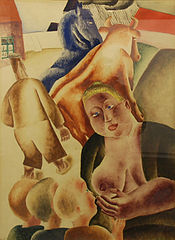
Returned to Belgium

Moved to Ghent
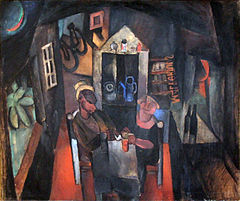
The change in the style and theme of the master’s works
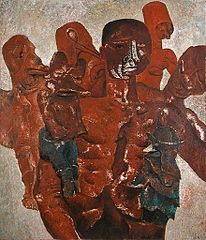
Twenty-five of the artist's paintings were exhibited at the Galerie in L'Epoque
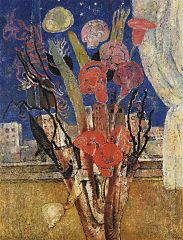
Created a large number of caricatures and comics
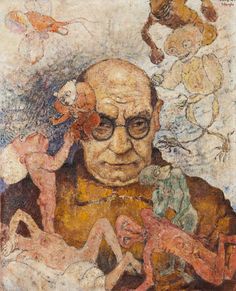
Frits van den Berghe died

Frits van den Berghe
On Artist
flow
Impressionism
Expressionism
Surrealism
Cubism
friends
Mark Shagal
artists
Emil Klaus
Henri Le Focognier
Max Ernst
James Ensor
By Artist
flow
Abstract expressionism
friends
Gustave de Smet
Constant Permeke
artists
Luke Peter Crombe
Maurice Skelcom
Kris Potsom
Lea Van Der Straten
Joe Van Rosset
